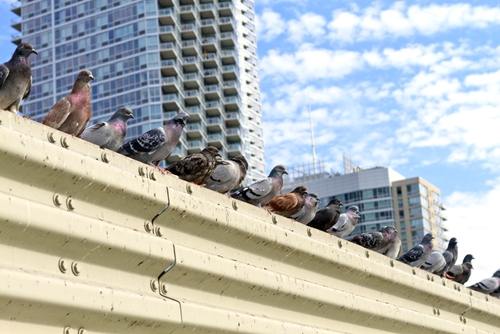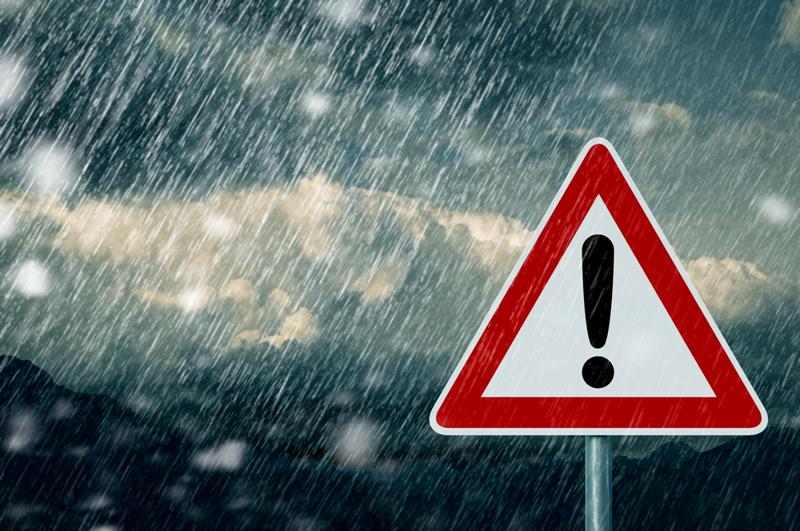Yuck! The Splatters on Your Vehicle Are Not Only Gross – They’re Harmful

Do bugs, birds and precipitation pose a serious threat to the condition of your vehicles?
Beware: Things are about to get disgusting. All squeamish tape enthusiasts out there, consider yourselves warned.
When automakers ship cars and trucks from manufacturing plants to dealerships, they undergo a proverbial gauntlet of grossness. These vehicles can be splattered with bug guts, lacquered with bird droppings and misted with acid rain.
As a company that produces some of the toughest automotive protective films on the market today, we feel obligated to inform you about how hazardous these materials can be to car exteriors and your bottom line. What are the facts? Do bugs, birds and precipitation pose a serious threat to the condition of your vehicles?
Definitely, but perhaps not how you might think.
“pH levels in bug guts vary greatly species to species.”
Guts and no glory
Contrary to popular belief, bug entrails are not universally acidic. In fact, while compiling findings on genetically modified foods, researchers from the Daily Kos found the pH levels of bug guts vary greatly species to species, from 3 all the way up to 10.
As a reference for those who don’t remember chemistry class, pH is measured on a scale of 0 (very acidic) to 14 (very basal or alkali), with 7 being neutral. Drinking water has a pH of 7.
However, even though some insects smashed against the hood of a freshly manufactured vehicle might not contain detail-destroying acids, exposure to sunlight could actually do considerable damage to a car exterior. For instance, one study from the University of Florida found that while its state’s widely loathed population of “lovebugs” only have a gut pH of 6.5 while alive – practically neutral and not enough to do damage – gut composition can change in as little as 24 hours and drop to a pH level of 4.25 if left out in the sun.
How much of a difference does that make? Since pH scales are logarithmic, a single unit drop in pH indicates an acidity increase 10 times as great – a pH level of 5 is 10 times as acidic as a pH level of 6. That means a pH level of 4.25 is more than 100 times as acidic as one of 6.5 overnight.
Bombs away!
Every wonder why the “presents” pigeons leave on your car are white? Since birds don’t have the plumbing to urinate like mammals do, they release all their excrement in one delightful package. Charming.
“Uric acid in bird poop causes millions of dollars of property damage every year.”
It’s uric acid that tints bird poop white. Uric acid could also be acidic enough to cause abrasions on surfaces. According to the International Association of certified Home Inspectors, bird poop has a pH level of between 3 and 4.5 and is the cause of millions of dollars of property damage every year.
Furthermore, one scientific study commissioned by auto accessories retailer Autoglym revealed hardened bird droppings left to bake in the sun can actually mess with how car exteriors react to heat and direct sunlight. Car lacquer expands when hot and contracts when cool, and a hardened bird dropping could cause it to contract unevenly, resulting in imperfections in an otherwise seamless paint job.
Hurtful rain
A light sprinkle of rain on the exterior of new car may not look all that detrimental, but the effects of acid rain may be the most insidious of the three contaminants listed here.

According to the U.S. Environmental Protection Agency, even if rain droplets dry quickly they may still leave what is known as a “dry deposition” in their wake. Invisible to the human eye, this particulate can “corrode metal and cause paint and stone to deteriorate” if left unchecked. Depending on the location and other ecological factors, acid rain typically has a pH level of 4.
Protective films save shine and leave scum behind
The truth is, while many entrenched industries will have automakers believe every squashed mosquito and seagull plop puts their vehicles one step closer to the junk heap, we see things more rationally. Yes, these materials could hurt a paint job all on their own, but the biggest dangers to the integrity of brand-new automobiles doesn’t come from Mother Nature – they come from neglect and inefficient operations.
In our research, we’ve found avoiding the issues of car cleanliness – the “I’ll-get-to-it-tomorrow” mentality, if you will – actually exposes vehicles to greater risks than any organic matter they might encounter en route to dealerships. And we understand it might not be a dealership’s fault. It could be that the business lacks the employees and/or resources necessary to scrub cars safely upon arrival and maintain their spotlessness until their purchase date.
Protective films like AutoWrap act as an impenetrable barrier between a clean coat of paint and all the icky (and acidic) things that could compromise it. But more importantly, AutoWrap reduces labor costs associated with vehicle upkeep on the lot without slowing down the assembly line on the plant floor.
So, ask yourself: Did you join the auto industry to sell quality products or wipe poop off car hoods?


